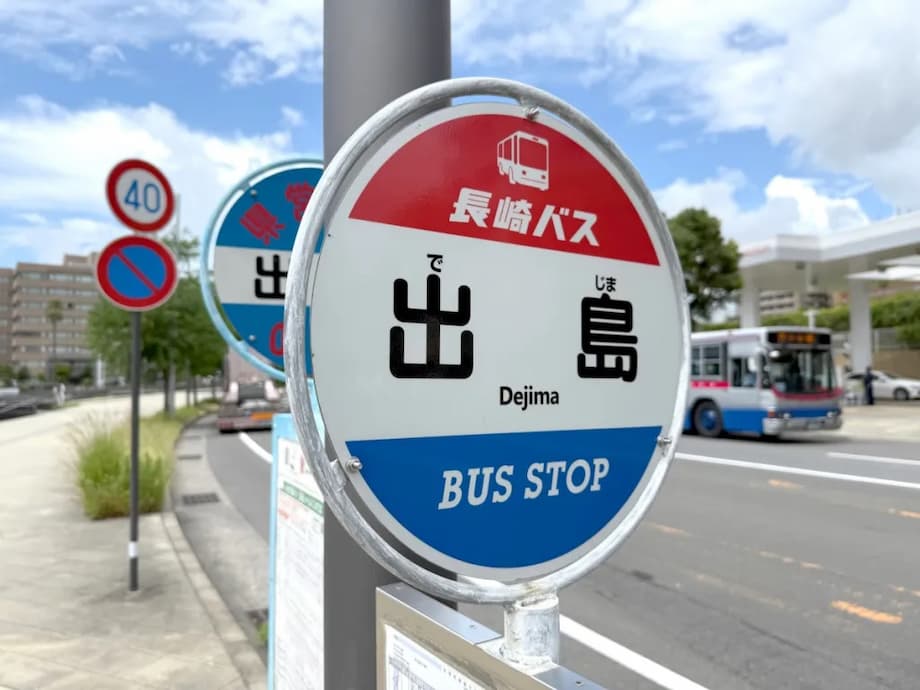Inside Dejima, the island that made guarded exchange possible
For more than two centuries, a tiny fan shaped island in Nagasaki Bay carried an outsized weight in world history. Dejima was built to contain, control, and strictly supervise foreigners. It ended up becoming the most important doorway for Western trade and knowledge to reach Japan during the Edo period. Behind its guarded bridge and high fences, Dutch merchants lived under constant surveillance. Still, ideas, books, instruments, plants, and techniques quietly crossed the water in both directions. The island that began as a barrier turned into a conduit that helped Japan modernize in the nineteenth century.
- Inside Dejima, the island that made guarded exchange possible
- How a fan shaped island was built and why the Dutch were chosen
- Life inside the gates
- What moved through Dejima
- Rangaku and the quiet spread of Western knowledge
- People who bridged two worlds
- From seclusion to treaty ports
- Loss and revival
- Visiting Dejima today
- Nagasaki’s wider gateway legacy
- The Essentials
Dejima’s story begins in the turbulence of the early Tokugawa era. The shogunate had united the country after civil war and wanted peace above all. Christianity, spread by Portuguese missionaries, was seen as a threat to that stability. The government responded with a series of seclusion edicts that restricted foreign contact and limited the movement of Japanese people. Dejima was the physical embodiment of that policy. It allowed the benefits of international trade while trying to keep foreign faith and politics at bay.
Walk the site today and you encounter carefully reconstructed residences, warehouses, clerks’ quarters, gates, and stone walls. Many structures blend Japanese joinery and tatami rooms with Western elements such as glazed windows and brick storage buildings. The scale is modest. The original island was small, roughly fifteen thousand square meters at its Edo peak, and shaped like a folding fan. It was linked to Nagasaki by a single bridge controlled by guards. Within that very limited space, daily life, business, diplomacy, and a quiet revolution in knowledge all unfolded.
How a fan shaped island was built and why the Dutch were chosen
Portuguese ships reached Japan in the mid sixteenth century, bringing firearms, global trade links, and Jesuit missionaries. Christianity spread rapidly in parts of Kyushu under influential warlords. After unification, Tokugawa rule took a harder line. The shogunate placed Nagasaki under direct control, curbed missionary activity, and issued edicts that limited foreign contact. Construction of Dejima began in 1634 and the island was completed in 1636 to confine Portuguese residents and monitor every interaction.
The turning point came after the Shimabara-Amakusa Uprising of 1637 to 1638. The revolt, which had many Christian participants, reinforced official fears about Catholic influence. The shogunate expelled the Portuguese in 1639. In 1641, the Dutch East India Company moved its trading post from Hirado to Dejima and accepted strict rules. The Dutch were seen as merchants first. They did not proselytize, which made them acceptable partners for a regime focused on order. Chinese trade continued separately under tight controls. Western contact narrowed to one controlled outpost, one guarded bridge, and a few ships each year.
The restrictions were real and detailed. Only a limited number of Dutch vessels could call at Nagasaki. The trading post chief, known by the Dutch term Opperhoofd, was responsible for every transaction and every rule. He also led elaborate tribute journeys to the shogun in Edo, a formal show of loyalty that doubled as a diplomatic channel. After 1790, the requirement eased to once every four years. Even with these limits, Dejima generated steady profits for the Dutch, and it offered the shogunate access to goods and information without opening the door to missionary activity.
Life inside the gates
Daily existence on Dejima was regimented. The island was enclosed by fences and walls. A narrow bridge with checkpoints connected it to the city. Sea gates controlled boat traffic. Japanese officials lived on site to watch and record activity. Interpreters managed every conversation. All incoming letters, packages, and books were inspected. The ban on Christianity was strict and enforced. The Dutch could meet only approved Japanese officials, merchants, interpreters, and licensed entertainers. Most residents were men, and family life was largely absent.
Rules and surveillance
Searches were routine. Luggage and quarters could be examined at any time. Leaving the island required written permission and an escort. The Opperhoofd bore personal responsibility for discipline. Breaking the rules risked fines, expulsion, or the end of trade. Even the calendar could cause trouble. When Dutch warehouses in Hirado displayed a stone inscription with a Christian calendar year, the shogunate ordered them torn down. Dejima was designed to minimize unregulated contact and keep symbolic control squarely in Japanese hands.
Work, leisure, and ceremony
Strict did not mean joyless. Between sailing seasons, Dejima’s residents worked, planned shipments, repaired warehouses, and kept accounts. They also found ways to pass the time. They introduced billiards and badminton to their hosts, shared beer and coffee, and tended small gardens with clover, cabbage, and other plants that were new to Japan. At formal banquets, a curious blend developed, with Western chairs and tables set atop tatami mats and Japanese dishes served alongside imported treats. Ceremonial life could be grand. The Edo tribute journeys became famous processions, complete with exotic gifts such as scientific instruments and sometimes animals. These displays offered entertainment to the public in the capital and quietly expanded the range of things Japanese officials and scholars could see and handle firsthand.
What moved through Dejima
Dejima was not a wide channel for commerce. It was a narrow one, but it ran for a long time. From 1641 to 1847, 606 Dutch ships called at Nagasaki to trade under the island’s rules. The flow connected Japan to markets in China, Southeast Asia, and Europe. Some years saw only one Dutch ship. In better years, as many as seven arrived. Cargoes were carefully tallied, taxes assessed, and every crate watched by officials and interpreters.
Goods the Dutch brought to Japan
- Chinese raw silk and finished textiles
- Cotton, sugar, and spices from Asia
- Materia medica used in traditional pharmacopeias
- Books, maps, and scientific instruments
- Novelty items and foodstuffs such as coffee, chocolate, and beer
Goods Japan exported
- Copper and silver that fed global trade
- Camphor used in medicine and industry
- Porcelain and lacquerware customized for European tastes
- Rice and other staples in limited quantities when permitted
The movement of goods mattered, yet the movement of information mattered just as much. Dutch captains brought reports of wars, inventions, and price shifts across Asia and Europe. Those dispatches helped the shogunate understand a changing world without opening its borders widely. Interpreters and scholars copied, translated, and discussed what arrived. That intellectual traffic gave Dejima an influence far beyond its ledger books.
Rangaku and the quiet spread of Western knowledge
Japan’s study of European science through the Dutch is known as rangaku, or Dutch learning. The shogunate maintained the ban on Christianity for centuries, yet it relaxed prohibitions on secular Western knowledge over time. In 1720, the government lifted the blanket ban on Western books, with exceptions for religious texts. That decision opened the floodgates for treatises on medicine, astronomy, physics, cartography, and military engineering. Dutch traders sold more than ten thousand foreign books in the late eighteenth and early nineteenth centuries. Japanese interpreters became skilled translators and teachers. Samurai and scholars from across the country traveled to Nagasaki to learn and exchange ideas.
Practical results followed. Anatomy texts inspired the landmark Japanese translation Kaitai Shinsho in 1774. Scientific instruments, including globes, telescopes, and electrostatic generators, became teaching tools. Concepts from chemistry and botany were adapted to local study. Dejima also introduced technologies and novelties such as paint pigments, pianos, photography, and diving bells. The island occupied an unusual position. It was a cage of rules and inspections. It was also a laboratory where careful observers could study objects, books, and people from far away, then spread what they learned.
People who bridged two worlds
Dejima’s legacy is attached to people as much as cargo. German physician Engelbert Kaempfer lived on the island from 1690 to 1692. He observed Japanese administration, religion, and natural history, and later published a detailed account that shaped Europe’s early understanding of the country. Swedish botanist Carl Peter Thunberg served as physician in the 1770s, gathered plants, and taught Japanese students the latest techniques in medicine.
In the nineteenth century, Philipp Franz von Siebold established a clinic and a school just outside the island under special permission. He trained a generation of Japanese doctors using European methods and left behind influential works on Japanese flora and society. His exile in 1829, after officials discovered prohibited maps among his possessions, highlighted the line that still separated scientific exchange from sensitive state information. He was later pardoned and returned to Japan.
Hendrik Doeff, a long serving Dutch chief in the early 1800s, steered the post through turbulent times when the Netherlands was annexed by Napoleonic France. For a period, Dejima kept the Dutch flag flying when it had disappeared from much of the globe. The island also saw the first brief, contested visit by a Western woman in 1817, when Titia Cock Blomhoff arrived with her husband, the chief factor, and then had to depart under government orders. The arrival was brief, yet it captured the public imagination in prints and paintings. Each of these figures, and many Japanese interpreters and officials who worked with them, helped construct a bridge of knowledge that reached far beyond the harbor.
From seclusion to treaty ports
Dejima’s special status did not last forever. In the first half of the nineteenth century, Russian, British, and American ships probed Japan’s defenses. The British frigate Phaeton sailed into Nagasaki in 1808 disguised as a Dutch ship, a shock that forced local officials to reexamine security. Pressure rose steadily until 1853, when Commodore Matthew Perry arrived with American warships and demands. Treaties opened Japanese ports to foreign trade and residence in the 1850s. The Dutch and Japanese signed their Treaty of Amity in Nagasaki in 1855. The Ansei Treaties of 1858 followed with broader commitments.
Dejima’s trading post was abolished in 1859 and converted to a consulate. Foreigners moved into designated settlements around treaty ports, including Nagasaki. The city grew and changed rapidly, and the island’s careful separation from the mainland quickly faded as land was reclaimed and canals redirected. By the early twentieth century, Dejima was no longer surrounded by water, and some buildings had been altered or lost. Its name remained, but the lines that once contained the world’s only Western foothold in Japan had blurred into the expanding city.
Loss and revival
Recognition of Dejima’s historical value began early. In 1922, the site was designated a national historic site. After the Second World War, the city and the national government started projects to excavate, document, and reconstruct. A major restoration plan launched in 1996 used archaeological work, Edo period documents, and models preserved in the Netherlands to rebuild the island’s streetscape. By 2021, sixteen buildings had been restored, including the Chief Factor’s Residence, warehouses, walls, and the Main Gate Bridge. The goal is ambitious and clear. Nagasaki aims to recover Dejima’s water boundaries by digging canals and rerouting the Nakashima River so that the site becomes an island again.
Visitors today see foundations paired with reconstructions finished down to the wallpaper patterns and paint colors. Interpretive exhibits in English and Japanese explain the rules, routines, and surprising cultural crossovers that defined life there. Costumed staff animate the scene. The project is ongoing, and each new structure tightens the picture of what the island looked and felt like at its height as Japan’s single point of direct contact with the West.
Visiting Dejima today
Dejima sits a short ride from Nagasaki Station on the city tram. Take line number 1 to the Dejima stop, which stands right by the entrance. The site is open from 8:00 to 21:00, with last entry at 20:40, and it does not have regular closing days. Standard admission is 520 yen. Hours and fees can change, so check the official site before you go for the latest details and special events. The city’s English portal for the site is a useful starting point for planning a visit. You can find it at nagasakidejima.jp.
Inside the grounds, you can explore more than a dozen restored structures. Highlights include the Chief Factor’s Residence with its mix of tatami rooms and Western style furniture, warehouses that once stored silk and copper, the Sea Gate, and clerks’ quarters that show how tightly paperwork ran the island. Display cases feature instruments and books linked to rangaku. A banquet hall illustrates the meeting of customs, where chairs, tables, and cutlery sat above woven mats. Street scenes explain how Dutch traders relied on teams of Japanese interpreters, guards, and official inspectors to get any business done.
The site is compact and well signed, which makes it easy to visit alongside other Nagasaki landmarks, from the city’s Chinatown to churches that reflect its long Christian heritage. Because Dejima’s neighborhood is lively, you can step from a seventeenth century streetscape into modern cafes within minutes. That contrast captures the city’s personality. Nagasaki is a place where the echoes of global encounters are still close to the surface.
Nagasaki’s wider gateway legacy
Dejima was the only place where Westerners lived inside Japan during the Edo period. The country was not entirely sealed, though. The shogunate managed other limited channels. The Tsushima domain handled diplomacy and trade with Korea. Satsuma oversaw relations with the Ryukyu Kingdom, which sent missions that appeared foreign in Edo ceremonies. The Matsumae clan traded with Ainu communities in the north. These separate gateways kept Japan informed and supplied in measured ways while the shogunate maintained its rule. Even so, Dejima remained the only legal Western window, and that made Nagasaki a special kind of port city.
The city’s multicultural history is visible today in its festivals and food. The Lantern Festival for Lunar New Year fills the streets each winter. Nagasaki’s Chinatown is the oldest in Japan. The legacy of sugar imports gave the region a taste for sweets and helped shape local dishes along the old Sugar Road. Dutch and Chinese traces sit side by side with Shinto shrines and Catholic churches. Dejima is one anchor in that story. It shows how a small, tightly controlled place can change a country by controlling the flow of goods and knowledge rather than stopping it outright.
The Essentials
- Dejima was built in 1636 as an artificial island in Nagasaki to confine Portuguese traders and limit missionary influence
- After the Portuguese were expelled in 1639, the Dutch East India Company moved to Dejima in 1641 under strict rules
- From 1641 to 1847, 606 Dutch ships traded at Dejima, with cargoes of silk, sugar, books, and instruments exchanged for Japanese copper, porcelain, and lacquerware
- Rangaku, or Dutch learning, grew as the shogunate allowed secular European science and medicine, fueling translations and experiments
- Notable figures linked to Dejima include Engelbert Kaempfer, Carl Peter Thunberg, Philipp Franz von Siebold, and Hendrik Doeff
- Dejima’s trading post closed in 1859 after treaty ports opened; the island was later absorbed into the growing city through land reclamation
- Since 1996, Nagasaki has reconstructed key buildings and aims to restore Dejima’s island form by reopening surrounding canals
- Dejima is open daily from 8:00 to 21:00, costs 520 yen to enter, and sits next to the Dejima tram stop
- Nagasaki’s role as a gateway continued through other channels with Korea, Ryukyu, and Ainu trade, but Dejima remained the only Western foothold in Edo Japan




